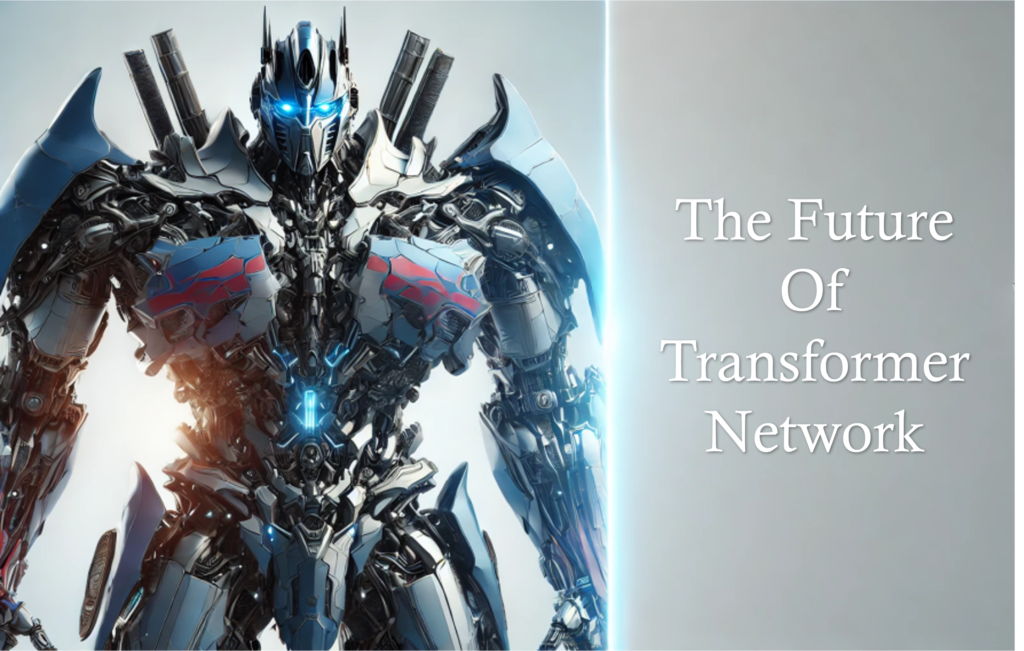The Rise and Future of Transformer Networks in Artificial Intelligence
The future of transformer networks is a topic of immense interest in artificial intelligence research and development. Since their debut in 2017 through the groundbreaking paper “Attention is All You Need” by Vaswani et al., transformer networks have become a cornerstone of machine learning, powering advancements across natural language processing (NLP), computer vision, time series forecasting, and beyond. Their scalability, versatility, and innovative architecture have positioned them as one of the most transformative technologies in AI.
What Transformers Have Achieved
Transformer models have revolutionized how machines understand and generate language. The Bidirectional Encoder Representations from Transformers (BERT) introduced bidirectional context comprehension, which enabled nuanced text processing for tasks like translation, sentiment analysis, and question answering. Generative Pre-trained Transformers (GPT), with their ability to create coherent and contextually relevant text, have powered chatbots, content generation, and even code synthesis. GPT-4, the latest iteration, has demonstrated emergent abilities, handling complex queries and multi-step reasoning tasks.
In the realm of computer vision, Vision Transformers (ViTs) have challenged the dominance of convolutional neural networks (CNNs). By applying the self-attention mechanism to image data, ViTs have achieved state-of-the-art performance in tasks such as image classification, object detection, and segmentation. These innovations have made transformers indispensable tools in both language and visual data processing.
Time series forecasting and prediction have also benefitted from transformer networks. By capturing long-range dependencies and patterns in sequential data, transformers have outperformed traditional models in areas like financial forecasting, weather prediction, and resource optimization. The future of transformer networks in time series applications continues to expand, offering breakthroughs in industries such as healthcare, logistics, and energy management.
Transformers have also ventured into specialized domains. For instance, DeepMind’s AlphaFold used transformer architectures to predict protein structures with unprecedented accuracy, revolutionizing computational biology. Similarly, transformers are being applied in financial modeling, drug discovery, and reinforcement learning, showcasing their adaptability across disciplines. The future of transformer networks in such specialized fields remains highly promising.
Challenges and Areas for Improvement
Despite their achievements, transformer networks face several challenges that demand attention to secure their future potential. Chief among these is their computational and memory requirements. The self-attention mechanism’s quadratic complexity makes transformers resource-intensive, especially for large datasets or massive models like GPT-4. To address this, researchers are exploring efficient variants such as Sparse Transformers and Linformers, which aim to reduce computational overhead without sacrificing performance.
Scalability and sustainability are other critical areas. As transformer models grow larger, their energy consumption increases, raising environmental concerns. Developing greener and more energy-efficient architectures is a pressing goal for the AI community. Lightweight transformers designed for edge devices are also gaining traction, enabling deployment in real-time applications such as mobile assistants and IoT devices.

The Future of Transformer Networks
The future of transformer networks lies in specialization, integration, and multimodal innovation. Domain-specific transformers tailored to fields like healthcare, education, and legal analysis are likely to emerge. These models will combine the robustness of transformers with the specificity required for industry-specific applications, unlocking new possibilities.
Hybrid architectures that integrate transformers with other machine learning paradigms, such as graph neural networks or convolutional layers, are expected to address complex, multi-modal problems. For example, combining graph-based reasoning with transformer’s attention mechanisms could lead to breakthroughs in drug discovery or social network analysis.
Multimodal transformers are another exciting frontier. These models, capable of processing and integrating text, images, audio, time series data, and even video, promise to revolutionize applications in virtual reality, autonomous systems, and personalized AI assistants. The future of transformer networks in multimodal applications is poised to redefine how AI handles complex, multi-source data. For instance, a multimodal transformer could seamlessly analyze a user’s spoken commands, visual context, and past preferences to deliver highly personalized recommendations.
Ethical Considerations and Responsible Development
As transformer networks become more powerful, addressing their ethical implications is crucial. Large-scale models often reflect the biases present in their training data, which can lead to biased outputs. Ensuring fairness and transparency in these models is essential to prevent unintended harm. Moreover, the accessibility of powerful generative models raises concerns about misuse, such as generating deepfakes or spreading misinformation.
Efforts to mitigate these risks include developing interpretability tools, implementing robust guidelines for responsible AI use, and fostering collaboration between researchers, policymakers, and industry stakeholders. Transparency in model training, alongside rigorous evaluations for fairness, will be vital in building trust in transformer-based systems. The future of transformer networks will also depend on ethical and sustainable practices.
Conclusion
The future of transformer networks is both exciting and challenging. Their achievements in NLP, vision, time series forecasting, and specialized domains have redefined the boundaries of AI capabilities. As research addresses their computational inefficiencies and ethical concerns, transformers are poised to become even more impactful.
By focusing on domain-specific applications, hybrid architectures, and multimodal integration, the future of transformer networks will continue to drive innovation in artificial intelligence. As we look ahead, it is clear that transformer networks will play a central role in shaping the next generation of AI technologies, ensuring their relevance for years to come.


